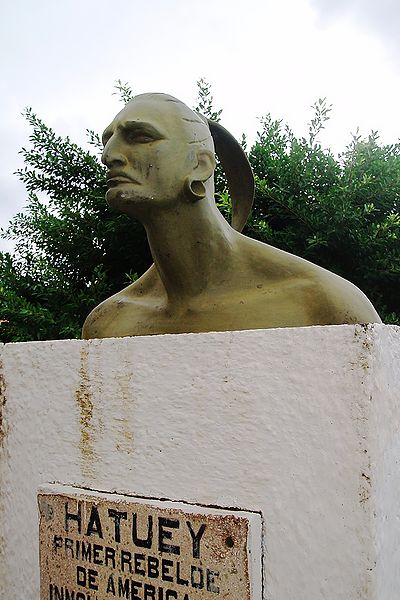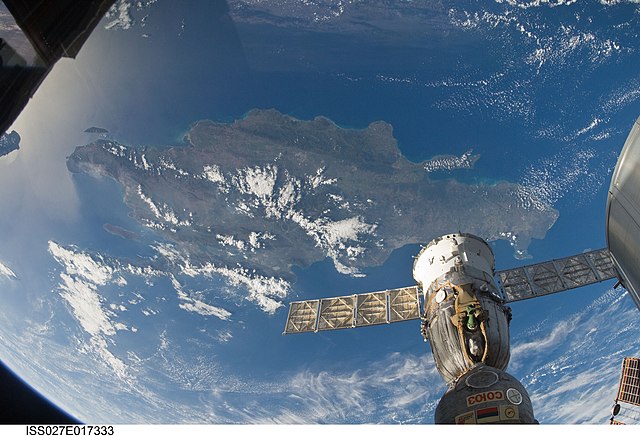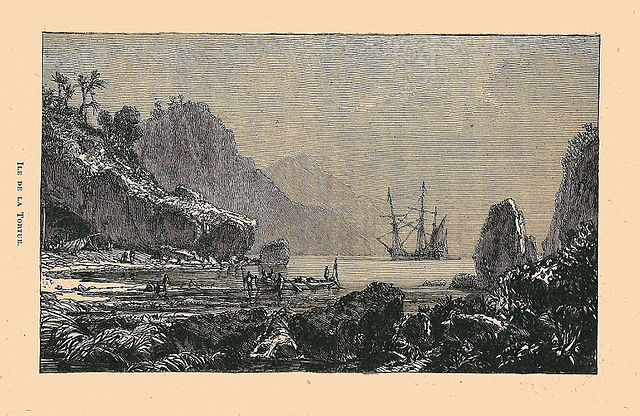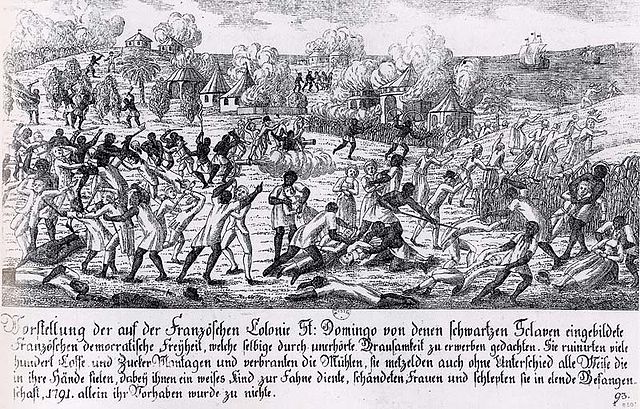Spanish colonization of the Americas
The Spanish colonization of the Americas began in 1493 on the Caribbean island of Hispaniola after the initial 1492 voyage of Genoese mariner Christopher Columbus under license from Queen Isabella I of Castile. These overseas territories of the Spanish Empire were under the jurisdiction of Crown of Castile until the last territory was lost in 1898. Spaniards saw the dense populations of indigenous peoples as an important economic resource and the territory claimed as potentially producing great wealth for individual Spaniards and the crown. Religion played an important role in the Spanish conquest and incorporation of indigenous peoples, bringing them into the Catholic Church peacefully or by force. The crown created civil and religious structures to administer the vast territory. Spanish men and women settled in greatest numbers where there were dense indigenous populations and the existence of valuable resources for extraction.
"The Discovery of America" (Johann Moritz Rugendas)
A 16th-century illustration by Flemish Protestant Theodor de Bry for Las Casas' A Short Account of the Destruction of the Indies depicting Taínos fighting back against Spaniards, showing cannibalism and forcing a Spaniard to swallow molten gold.
Theodor de Bry illustration depicting Spanish atrocities during the conquest of Hispaniola. Las Casas wrote about the cruelty of Spanish settlers: "They erected certain Gibbets, large, but low made, so that their feet almost reached the ground, every one of which was so ordered as to bear Thirteen Persons in Honour and Reverence (as they said blasphemously) of our Redeemer and his Twelve Apostles, under which they made a Fire to burn them to Ashes whilst hanging on them"
Bust of Hatuey, who rebelled against the Spanish
Hispaniola is an island in the Caribbean that is part of the Greater Antilles. Hispaniola is the most populous island in the West Indies, and the region's second largest in area, after the island of Cuba. The 76,192-square-kilometre (29,418 sq mi) island is divided into two separate nations: the Spanish-speaking Dominican Republic (48,445 km2 to the east and the French/Haitian Creole-speaking Haiti (27,750 km2 to the west. The only other divided island in the Caribbean is Saint Martin, which is shared between France and the Netherlands.
View from the ISS, 2011
Fortaleza Ozama
Ile de la Tortue (Tortuga island) made Hispaniola a center of pirate activity in the 17th century.
Saint-Domingue slave revolt in 1791








